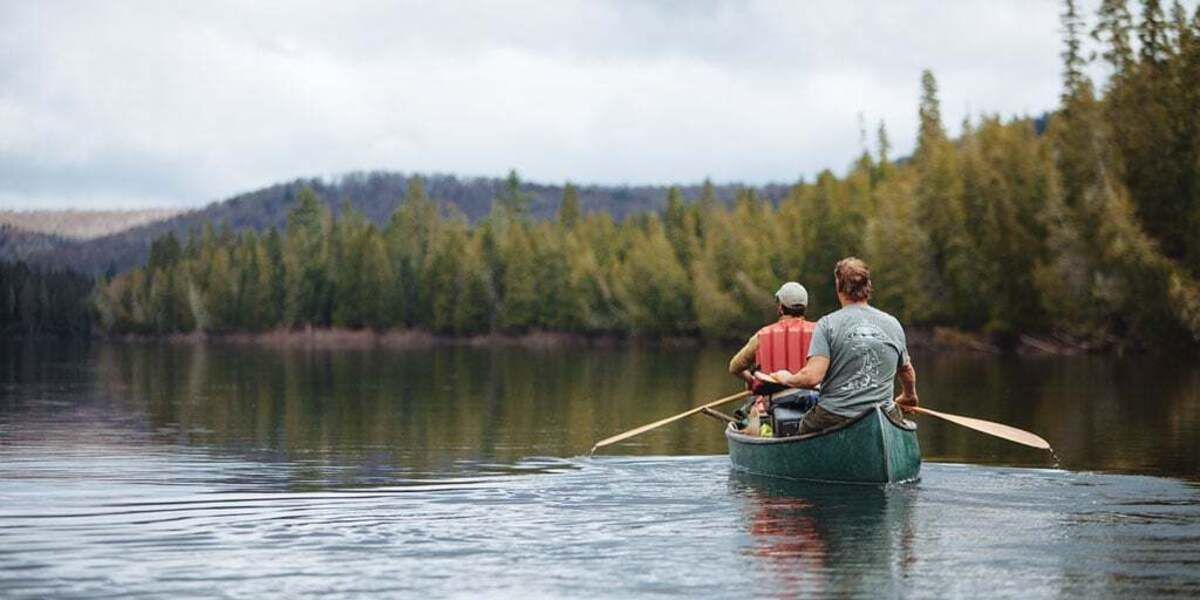Hidden Lumber Towns In Maine’s Allagash Wilderness

Have you ever wondered about the hidden lumber towns in Maine's Allagash Wilderness? These remote spots, once bustling with activity, now offer a glimpse into a bygone era. Imagine walking through dense forests, stumbling upon old cabins, and seeing remnants of mills that powered the local economy. These towns, surrounded by nature, provide a unique blend of history and adventure. Whether you're an avid hiker or a history buff, exploring these hidden gems can be a rewarding experience. Get ready to step back in time and uncover the stories of Maine's forgotten lumber towns.
Discovering Maine's Hidden Lumber Towns
Maine's Allagash Wilderness is a treasure chest of history and natural beauty. Tucked away in this vast expanse are hidden lumber towns that once thrived during the logging boom. These towns, now mostly abandoned, offer a glimpse into a bygone era. Let's explore some of these fascinating places.
1. Chesuncook Village
Chesuncook Village, established in the 19th century, is one of the oldest logging communities in the area. Located on the western shore of Chesuncook Lake, this village once bustled with loggers and their families.
- Historic Buildings: Many original structures still stand, including the Chesuncook Lake House, which has served visitors since 1864.
- Scenic Views: The village offers stunning views of Chesuncook Lake and the surrounding wilderness.
- Outdoor Activities: Enjoy hiking, fishing, and canoeing in this serene setting.
2. Churchill Depot
Churchill Depot played a crucial role in the logging industry, serving as a major transportation hub. Situated along the Allagash River, it was a bustling center for log drives.
- Logging Museum: Visit the museum to learn about the history of logging in the area.
- Historic Equipment: See old logging equipment and tools used by the loggers.
- Nature Trails: Explore the nearby trails that wind through the forest and along the river.
3. Eagle Lake
Eagle Lake was once a thriving lumber town, with a large sawmill and numerous logging camps. Today, it is a quiet spot perfect for those seeking solitude and a connection to nature.
- Old Sawmill Ruins: Wander through the remnants of the old sawmill and imagine the bustling activity that once took place.
- Wildlife Watching: The area is home to a variety of wildlife, including moose, deer, and eagles.
- Fishing: Eagle Lake is known for its excellent fishing opportunities, particularly for trout and salmon.
4. Telos
Telos, located near Telos Lake, was another important logging town. It served as a key point for transporting logs from the Allagash region to the Penobscot River.
- Telos Dam: The historic dam, built in the 1840s, still stands and is a testament to the engineering feats of the time.
- Canoeing: Paddle along the waterways that were once used to float logs downstream.
- Camping: Set up camp near the lake and enjoy the peaceful surroundings.
5. Chamberlain Lake
Chamberlain Lake was a central hub for loggers working in the Allagash Wilderness. The town supported numerous logging camps and sawmills.
- Historic Cabins: Some of the original logging cabins have been preserved and can be visited.
- Allagash Wilderness Waterway: The lake is part of the Allagash Wilderness Waterway, offering endless opportunities for paddling and exploration.
- Fishing and Hunting: The area is popular for both fishing and hunting, with abundant wildlife and pristine waters.
6. Umsaskis Lake
Umsaskis Lake, though lesser-known, played a significant role in the logging industry. The town's remote location made it a perfect spot for loggers seeking to harvest the rich timber resources.
- Remote Beauty: Umsaskis Lake offers a tranquil escape with its untouched natural beauty.
- Bird Watching: The area is a haven for bird watchers, with numerous species to observe.
- Kayaking: Paddle through the calm waters and take in the serene landscape.
7. Long Lake
Long Lake was a bustling community during the height of the logging era. The town's strategic location made it a key point for transporting logs to mills downstream.
- Historic Sites: Explore the remains of old logging camps and equipment scattered around the area.
- Boating: Enjoy a leisurely boat ride on Long Lake, taking in the scenic views.
- Hiking: Numerous trails offer opportunities for hiking and exploring the surrounding wilderness.
8. Allagash Village
Allagash Village, located at the confluence of the Allagash and St. John Rivers, was a vital center for the logging industry. The village remains a gateway to the wilderness.
- Allagash Historical Society: Learn about the village's history and its role in the logging industry.
- River Activities: Canoe or kayak along the rivers that were once used to transport logs.
- Local Culture: Experience the unique culture and hospitality of the residents who still call Allagash Village home.
Discover the Charm of Maine's Lumber Towns
Maine's hidden lumber towns offer a unique glimpse into the past. These towns, nestled in the Allagash Wilderness, are rich in history and natural beauty. Visiting places like Chamberlain, Eagle Lake, and Telos provides a chance to see remnants of the logging industry that once thrived here. The old railroads, logging camps, and scenic lakes create a perfect backdrop for adventure and relaxation. Exploring these areas, you can hike, fish, or simply enjoy the peaceful surroundings. Each town has its own story, waiting to be discovered. Whether you're a history buff or nature lover, these hidden gems are worth the trip. So pack your bags, grab a map, and set out to uncover the charm of Maine's lumber towns. You'll leave with memories and a deeper appreciation for this beautiful region.

